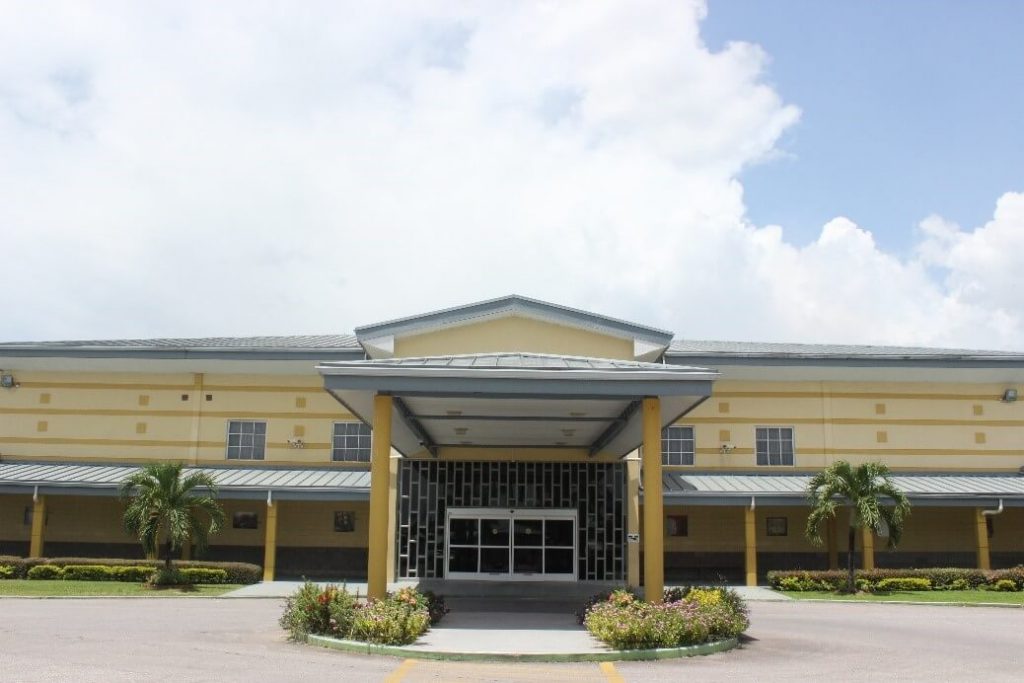About BATCE

Bishop Anstey High School East (BAHSE) and Trinity College East (TCE) are two secondary schools for girls and boys respectively. Founded in 2001, it was constructed as part of a project initiative of the Anglican Diocese in Trinidad and Tobago for the provision of secondary education. The schools are part of eight (8) secondary schools in Trinidad and Tobago, under the purview of the Bishop Anstey Association. Since its establishment, the schools have been promoting the tenets of Anglicanism and Christian values as a pathway to enriching the scholastic, moral and spiritual lives of their students.
Collectively known as Bishop Anstey High School East & Trinity College East (BATCE), BAHSE and TCE share a campus of nineteen acres of land space in Trincity, Trinidad. This shared campus offers a clean, safe and positive environment which is conducive to teaching and learning as well as the all-round development of students. As a seven-year school- BATCE has a joint Sixth Form Department, the institution prepares students for the Caribbean Examinations Council (CXC) Caribbean Secondary Education Certificate known as “CSEC” at 5th Form and the Caribbean Advanced Proficiency Examinations (CAPE) level examinations at 6th Form level. BATCE can be considered a gem among secondary schools, having evolved remarkably over the few years of its existence into an educational institution renowned for its academic as well as extra-curricular excellence.
BATCE has six (6) strategic pillars that guide the operations of the institution:
Pillar -1
- Academic Excellence – is the ability of a student to use the quality educational resources provided to achieve or excel in scholastic activity, as defined within our performance standards, by demonstrating superior learning and intellectual capacities and skills that prepare him /her for service to society.
- To create and sustain an inclusive environment for the continuous achievement of academic excellence.
- To ensure effective teaching to support students’ learning and offer a curriculum that meets the needs of all students
- To produce students with the ability to apply the skills of problem-solving, critical thinking, communication, innovativeness and collaboration in a rapidly changing technological environment.
Pillar – 2
- Moral and Spiritual Development – is grounded in the Anglican tradition and building a meaningful relationship with God. It facilitates a school-community approach to the development of moral and ethical values and pro-social behaviours in the school community. It will encourage students and staff to demonstrate the school’s Core Values, make beneficial life choices and influence their peers positively.
- To foster and sustain a Spirit of Anglicanism through the culture and climate of the institution.
- To develop and enhance our core values, grounded in the Anglican Tradition, as well as facilitate an environment which enables a meaningful relationship with God.
- To instill in our students an attitude of service to all within their community.
Pillar – 3
- Technology Leadership – Being Leaders in the ethical practice of facilitating learning and improving performance in pedagogical practices through the innovative use and management of appropriate technological processes and resources in all school activities; using technology in a responsive manner to ensure that we continue to provide the quality of educational services.
- To become the leaders in technology by its effective integration in the delivery and management of the curriculum, enabling a rich and rewarding teaching and learning experience.
- To reshape the traditional learning environment.
- To seek to engage students through technology and equip them with the essential skills and tools to succeed and become leaders in school and the 21st-century environment.
Pillar – 4
- All-round Student Development – pillar focuses on enhancing the gifts of our students through spiritual, social, emotional, physical, cognitive and character development to become responsible, patriotic and successful citizens and leaders in their communities.
- 100% student exposure and involvement in co and extracurricular activities.
- Development of leadership competencies in students.
- Development of social and emotional competencies in students.
- Development of a sense of civil and environmental responsibility.
Pillar – 5
- World of Work and Entrepreneurship – is designed to provide our students with the necessary mindset, skills and competencies for their entry into the 21st Century environment.
- To provide students with the knowledge, skills and attitudes for the World of Work and Entrepreneurship.
- To provide students with exposure and experience in the World of Work and Entrepreneurship.
- To periodically update our World of Work and Entrepreneurship programmes.
- To help students gain real-world attitudes, skills, and experience to better prepare them for the dynamic work environment.
Pillar – 6
- Education for Sustainable Development – is about the creation of a school given to sustaining and preserving our human, financial, physical and environmental resources.
- To enable students to develop leading and managing skills and links with the community we serve.
- To equip students with the knowledge, skills and attitudes to deal with the challenges of present-day activities.
- To provide a safe and supportive environment for all stakeholders.
- To foster a climate of wellness and school/work-life balance in our institution.
- To foster a mindset of good stewardship of all our resources
